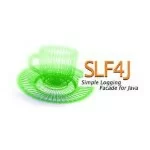How To Stream/Serialize JPA Result As JAX-RS Response For Large Data
There are times that retrieving a large data set through JPA is necessary (e.g. more than 1,000,000 records) and having them stuffed into a single instance of java.util.List is just risky (memory barrier). So, here’s a quick solution of how a JAX-RS REST resource end-point could still give us a timely Response without breaking the memory constrain through streaming or serialization of JPA entity by “pages”.
Example Database Table And JPA Entity
Database Table
To demonstrate how we could achieve outputting of large data, here’s an example MySQL database table that we could use.
01 02 03 04 05 06 07 08 09 10 | create database large_data_test_db;use large_data_test_db;create table generated_uuids ( record_no bigint not null auto_increment, uuid varchar(100) not null, datetime_generated datetime not null, primary key(record_no), unique(uuid)); |
JPA Entity
Next, define the JPA entity class which represents the table structure of the above.
Codes for GeneratedUuidEntity.java
001 002 003 004 005 006 007 008 009 010 011 012 013 014 015 016 017 018 019 020 021 022 023 024 025 026 027 028 029 030 031 032 033 034 035 036 037 038 039 040 041 042 043 044 045 046 047 048 049 050 051 052 053 054 055 056 057 058 059 060 061 062 063 064 065 066 067 068 069 070 071 072 073 074 075 076 077 078 079 080 081 082 083 084 085 086 087 088 089 090 091 092 093 094 095 096 097 098 099 100 101 102 103 | package com.developerscrappad;import java.io.Serializable;import java.util.Date;import javax.persistence.Column;import javax.persistence.Entity;import javax.persistence.GeneratedValue;import javax.persistence.GenerationType;import javax.persistence.Id;import javax.persistence.NamedQueries;import javax.persistence.NamedQuery;import javax.persistence.Table;import javax.persistence.Temporal;import javax.persistence.TemporalType;@Entity@Table( name = "generated_uuids" )@NamedQueries( { @NamedQuery( name = "GeneratedUuidEntity.listAll", query = "SELECT u FROM GeneratedUuidEntity u" ), @NamedQuery( name = "GeneratedUuidEntity.queryRecordsSize", query = "SELECT count(u) FROM GeneratedUuidEntity u" )} )public class GeneratedUuidEntity implements Serializable { private static final long serialVersionUID = 12312312234234123L; @Id @GeneratedValue( strategy = GenerationType.IDENTITY ) @Column( name = "record_no" ) private Long recordNo; @Column( name = "uuid" ) private String uuid; @Column( name = "datetime_generated" ) @Temporal( TemporalType.TIMESTAMP ) private Date datetimeGenerated; public GeneratedUuidEntity() { } public GeneratedUuidEntity( Long recordNo ) { this.recordNo = recordNo; } public GeneratedUuidEntity( Long recordNo, String uuid, Date datetimeGenerated ) { this.recordNo = recordNo; this.uuid = uuid; this.datetimeGenerated = datetimeGenerated; } public Long getRecordNo() { return recordNo; } public void setRecordNo( Long recordNo ) { this.recordNo = recordNo; } public String getUuid() { return uuid; } public void setUuid( String uuid ) { this.uuid = uuid; } public Date getDatetimeGenerated() { return datetimeGenerated; } public void setDatetimeGenerated( Date datetimeGenerated ) { this.datetimeGenerated = datetimeGenerated; } @Override public int hashCode() { int hash = 0; hash += ( recordNo != null ? recordNo.hashCode() : 0 ); return hash; } @Override public boolean equals( Object object ) { // TODO: Warning - this method won't work in the case the id fields are not set if ( !( object instanceof GeneratedUuidEntity ) ) { return false; } GeneratedUuidEntity other = ( GeneratedUuidEntity ) object; if ( ( this.recordNo == null && other.recordNo != null ) || ( this.recordNo != null && !this.recordNo.equals( other.recordNo ) ) ) { return false; } return true; } @Override public String toString() { return "com.developerscrappad.GeneratedUuidEntity[ recordNo=" + recordNo + " ]"; }} |
There are two named queries defined in GeneratedUuidEntity. The GeneratedUuidEntity.queryRecordsSize is to query the total record number of the table, whereas the GeneratedUuidEntity.listAll is to retrieve all of the records in the table.
Implementing The JAX-RS REST Resource (The Java EE way)
Let’s have a JAX-RS REST resource class by the name JPAStreamingRESTResourcewith an available JPA EntityManager (Persistence Unit Name: JPAStreamingPU) to be injected and to be obtained through a protected method getEntityManager().
01 02 03 04 05 06 07 08 09 10 11 12 13 14 15 16 17 18 19 20 21 22 23 | @Path( "generated-uuids" )@Stateless( name = "JPAStreamingRESTResource", mappedName = "ejb/JPAStreamingRESTResource" )public class JPAStreamingRESTResource { @PersistenceContext( unitName = "JPAStreamingPU" ) private EntityManager entityManager; protected EntityManager getEntityManager() { return entityManager; } /** * Say "NO" to response caching */ protected Response.ResponseBuilder getNoCacheResponseBuilder( Response.Status status ) { CacheControl cc = new CacheControl(); cc.setNoCache( true ); cc.setMaxAge( -1 ); cc.setMustRevalidate( true ); return Response.status( status ).cacheControl( cc ); }} |
Besides, we have a method name getNoCacheResponseBuilder(), which is to obtain a non-caching javax.ws.rs.core.Response.ResponseBuilder, so that we don’t get weird cached results later.
The JPA Invocation Methods
Next, let’s define two methods within the resource class, namely:
queryGeneratedUuidRecordsSize() – to retrieve the total number of records in the table
1 2 3 4 | private int queryGeneratedUuidRecordsSize() { return getEntityManager().createNamedQuery( "GeneratedUuidEntity.queryRecordsSize", Long.class ) .getSingleResult().intValue();} |
listAllGeneratedUuidEntities() – to retrieve the all of the data from the table, but with certain limitation criteria such as the start position of the record (recordPosition) and the maximum number of records per round trip to the database (recordsPerRoundTrip). The intention is to “page” the results so that the result list will not be overly bloated. We’ll see this in action later.
1 2 3 4 5 6 | private List<GeneratedUuidEntity> listAllGeneratedUuidEntities( int recordPosition, int recordsPerRoundTrip ) { return getEntityManager().createNamedQuery( "GeneratedUuidEntity.listAll" ) .setFirstResult( recordPosition ) .setMaxResults( recordsPerRoundTrip ) .getResultList();} |
Let The Streaming Begin
Now, let’s implement the resource end-point method, which retrieves the data without compromising size, at least in theoretical speaking. This method will return a JSON response with the data format of:
01 02 03 04 05 06 07 08 09 10 | { "result": [ { "record_no": 1, "uuid": "34d99089-3e36-4f00-ab93-846b61771eb3", "datetime_generated": "2015-06-28 21:02:23" }, … ]} |
01 02 03 04 05 06 07 08 09 10 11 12 13 14 15 16 17 18 19 20 21 22 23 24 25 26 27 28 29 30 31 32 33 34 35 36 37 38 39 40 41 42 43 44 45 46 47 48 49 50 51 52 53 | @GET@Path( "list-all" )@Produces( "application/json" )@TransactionAttribute( TransactionAttributeType.NEVER )public Response streamGeneratedUuids() { // Define the format of timestamp output SimpleDateFormat df = new SimpleDateFormat( "yyyy-MM-dd HH:mm:ss" ); return getNoCacheResponseBuilder( Response.Status.OK ).entity( new StreamingOutput() { // Instruct how StreamingOutput's write method is to stream the data @Override public void write( OutputStream os ) throws IOException, WebApplicationException { int recordsPerRoundTrip = 100; // Number of records for every round trip to the database int recordPosition = 0; // Initial record position index int recordSize = queryGeneratedUuidRecordsSize(); // Total records found for the query // Start streaming the data try ( PrintWriter writer = new PrintWriter( new BufferedWriter( new OutputStreamWriter( os ) ) ) ) { writer.print( "{\"result\": [" ); while ( recordSize > 0 ) { // Get the paged data set from the DB List<GeneratedUuidEntity> generatedUuidEntities = listAllGeneratedUuidEntities( recordPosition, recordsPerRoundTrip ); for ( GeneratedUuidEntity generatedUuidEntity : generatedUuidEntities ) { if ( recordPosition > 0 ) { writer.print( "," ); } // Stream the data in Json object format writer.print( Json.createObjectBuilder() .add( "record_no", generatedUuidEntity.getRecordNo() ) .add( "uuid", generatedUuidEntity.getUuid() ) .add( "datetime_generated", df.format( generatedUuidEntity.getDatetimeGenerated() ) ) .build().toString() ); // Increase the recordPosition for every record streamed recordPosition++; } // update the recordSize (remaining no. of records) recordSize -= recordsPerRoundTrip; } // Done! writer.print( "]}" ); } } } ).build();} |
Cord Explanation:
This is quite simple actually. The trick is to define the expression of the anonymous class StreamingOutput by overriding the write() method, which in it, first query the total record size through queryGeneratedUuidRecordsSize(), then retrieves the records page by page through listAllGeneratedUuidEntities(). This method will make several round trips to the database, depending on the recordsPerRoundTrip value defined.
Full source codes for JPAStreamingRESTResource.java:
001 002 003 004 005 006 007 008 009 010 011 012 013 014 015 016 017 018 019 020 021 022 023 024 025 026 027 028 029 030 031 032 033 034 035 036 037 038 039 040 041 042 043 044 045 046 047 048 049 050 051 052 053 054 055 056 057 058 059 060 061 062 063 064 065 066 067 068 069 070 071 072 073 074 075 076 077 078 079 080 081 082 083 084 085 086 087 088 089 090 091 092 093 094 095 096 097 098 099 100 101 102 103 104 105 106 107 108 109 110 111 112 | package com.developerscrappad;import java.io.BufferedWriter;import java.io.IOException;import java.io.OutputStream;import java.io.OutputStreamWriter;import java.io.PrintWriter;import java.text.SimpleDateFormat;import java.util.List;import javax.ejb.Stateless;import javax.ejb.TransactionAttribute;import javax.ejb.TransactionAttributeType;import javax.json.Json;import javax.persistence.EntityManager;import javax.persistence.PersistenceContext;import javax.ws.rs.GET;import javax.ws.rs.Path;import javax.ws.rs.Produces;import javax.ws.rs.WebApplicationException;import javax.ws.rs.core.CacheControl;import javax.ws.rs.core.Response;import javax.ws.rs.core.StreamingOutput;@Path( "generated-uuids" )@Stateless( name = "JPAStreamingRESTResource", mappedName = "ejb/JPAStreamingRESTResource" )public class JPAStreamingRESTResource { @PersistenceContext( unitName = "JPAStreamingPU" ) private EntityManager entityManager; private List<GeneratedUuidEntity> listAllGeneratedUuidEntities( int recordPosition, int recordsPerRoundTrip ) { return getEntityManager().createNamedQuery( "GeneratedUuidEntity.listAll" ) .setFirstResult( recordPosition ) .setMaxResults( recordsPerRoundTrip ) .getResultList(); } private int queryGeneratedUuidRecordsSize() { return getEntityManager().createNamedQuery( "GeneratedUuidEntity.queryRecordsSize", Long.class ) .getSingleResult().intValue(); } protected EntityManager getEntityManager() { return entityManager; } /** * Say "NO" to response caching */ protected Response.ResponseBuilder getNoCacheResponseBuilder( Response.Status status ) { CacheControl cc = new CacheControl(); cc.setNoCache( true ); cc.setMaxAge( -1 ); cc.setMustRevalidate( true ); return Response.status( status ).cacheControl( cc ); } @GET @Path( "list-all" ) @Produces( "application/json" ) @TransactionAttribute( TransactionAttributeType.NEVER ) public Response streamGeneratedUuids() { // Define the format of timestamp output SimpleDateFormat df = new SimpleDateFormat( "yyyy-MM-dd HH:mm:ss" ); return getNoCacheResponseBuilder( Response.Status.OK ).entity( new StreamingOutput() { // Instruct how StreamingOutput's write method is to stream the data @Override public void write( OutputStream os ) throws IOException, WebApplicationException { int recordsPerRoundTrip = 100; // Number of records for every round trip to the database int recordPosition = 0; // Initial record position index int recordSize = queryGeneratedUuidRecordsSize(); // Total records found for the query // Start streaming the data try ( PrintWriter writer = new PrintWriter( new BufferedWriter( new OutputStreamWriter( os ) ) ) ) { writer.print( "{\"result\": [" ); while ( recordSize > 0 ) { // Get the paged data set from the DB List<GeneratedUuidEntity> generatedUuidEntities = listAllGeneratedUuidEntities( recordPosition, recordsPerRoundTrip ); for ( GeneratedUuidEntity generatedUuidEntity : generatedUuidEntities ) { if ( recordPosition > 0 ) { writer.print( "," ); } // Stream the data in Json object format writer.print( Json.createObjectBuilder() .add( "record_no", generatedUuidEntity.getRecordNo() ) .add( "uuid", generatedUuidEntity.getUuid() ) .add( "datetime_generated", df.format( generatedUuidEntity.getDatetimeGenerated() ) ) .build().toString() ); // Increase the recordPosition for every record streamed recordPosition++; } // update the recordSize (remaining no. of records) recordSize -= recordsPerRoundTrip; } // Done! writer.print( "]}" ); } } } ).build(); }} |
Watch Out
Do remember to tune the application server’s response connection timeout value to prevent java.io.IOException Premature EOF exception being thrown by the REST or Http Client.
Testing It
To test whether this works, just get the table loaded with just 567 records. Then, have the unit test invoke the end-point URL and save the retrieved JSON data to a file with the below unit test codes (Apache HttpClient is used):
Codes for JPAStreamingUnitTest.java:
001 002 003 004 005 006 007 008 009 010 011 012 013 014 015 016 017 018 019 020 021 022 023 024 025 026 027 028 029 030 031 032 033 034 035 036 037 038 039 040 041 042 043 044 045 046 047 048 049 050 051 052 053 054 055 056 057 058 059 060 061 062 063 064 065 066 067 068 069 070 071 072 073 074 075 076 077 078 079 080 081 082 083 084 085 086 087 088 089 090 091 092 093 094 095 096 097 098 099 100 101 102 103 104 105 106 107 108 109 110 111 112 113 114 115 116 117 118 119 120 121 122 123 124 125 | package com.developerscrappad;import java.io.File;import java.io.FileInputStream;import static org.junit.Assert.*;import java.nio.file.FileSystems;import java.nio.file.Files;import java.sql.Connection;import java.sql.DriverManager;import java.sql.PreparedStatement;import java.text.ParseException;import java.text.SimpleDateFormat;import java.util.UUID;import javax.json.Json;import javax.json.JsonArray;import javax.json.JsonObject;import javax.json.JsonReader;import org.apache.http.HttpEntity;import org.apache.http.client.methods.CloseableHttpResponse;import org.apache.http.client.methods.HttpGet;import org.apache.http.impl.client.CloseableHttpClient;import org.apache.http.impl.client.HttpClients;import org.junit.AfterClass;import org.junit.BeforeClass;import org.junit.Test;public class JPAStreamingUnitTest { private static final String dbDriverClassname = "com.mysql.jdbc.Driver"; private static final String dbUrl = "jdbc:mysql://localhost:3306/large_data_test_db"; private static final String username = "username"; private static final String password = "password"; private static final int numberOfRecords = 567; private static final String jsonResultOutputFilename = "testing123.json"; @BeforeClass public static void setUpClass() { try { Class.forName( dbDriverClassname ); try ( Connection conn = DriverManager.getConnection( dbUrl, username, password ) ) { String insertSQL = "insert into generated_uuids (uuid, datetime_generated) values (?, now())"; try ( PreparedStatement stmt = conn.prepareStatement( insertSQL ) ) { for ( int i = 0; i < numberOfRecords; i++ ) { System.out.println( "Inserting row: " + i ); stmt.setString( 1, UUID.randomUUID().toString() ); stmt.executeUpdate(); } } } } catch ( final Exception ex ) { ex.printStackTrace(); fail( ex.getMessage() ); } } @AfterClass public static void tearDownClass() { try { Class.forName( dbDriverClassname ); try ( Connection conn = DriverManager.getConnection( dbUrl, username, password ) ) { String truncateSQL = "truncate generated_uuids"; conn.createStatement().executeUpdate( truncateSQL ); } new File( System.getProperty( "java.io.tmpdir" ), jsonResultOutputFilename ).delete(); } catch ( final Exception ex ) { ex.printStackTrace(); fail( ex.getMessage() ); } } @Test public void testJPAStreaming() { try { CloseableHttpClient httpclient = HttpClients.createDefault(); HttpGet httpGet = new HttpGet( url ); try ( CloseableHttpResponse response1 = httpclient.execute( httpGet ) ) { System.out.println( response1.getStatusLine() ); HttpEntity entity1 = response1.getEntity(); Files.copy( entity1.getContent(), FileSystems.getDefault().getPath( System.getProperty( "java.io.tmpdir" ), jsonResultOutputFilename ) ); } // Validate try ( JsonReader jsonReader = Json.createReader( new FileInputStream( new File( System.getProperty( "java.io.tmpdir" ), jsonResultOutputFilename ) ) ) ) { JsonObject jsonObj = jsonReader.readObject(); assertTrue( jsonObj.containsKey( "result" ) ); JsonArray jsonArray = jsonObj.getJsonArray( "result" ); assertEquals( numberOfRecords, jsonArray.size() ); SimpleDateFormat validationDF = new SimpleDateFormat( "yyyy-MM-dd HH:mm:ss" ); for ( int i = 0; i < jsonArray.size(); i++ ) { JsonObject generatedUuidJsonObj = jsonArray.getJsonObject( i ); int recordNumber = generatedUuidJsonObj.getInt( "record_no" ); assertTrue( recordNumber > 0 ); try { UUID.fromString( generatedUuidJsonObj.getString( "uuid" ) ); } catch ( IllegalArgumentException ex ) { fail( "Invalid UUID format at record number: " + recordNumber ); } try { validationDF.parse( generatedUuidJsonObj.getString( "datetime_generated" ) ); } catch ( final NullPointerException | ParseException ex ) { fail( "datetime_generated field must not be null and must be of format yyyy-MM-dd HH:mm:ss" ); } } } } catch ( final Exception ex ) { ex.printStackTrace(); fail( ex.getMessage() ); } }} |
And we are done. Thanks for reading and hope this helps.
| Reference: | How To Stream/Serialize JPA Result As JAX-RS Response For Large Data from our JCG partner Max Lam at the A Developer’s Scrappad blog. |






The JSR-352 and here the javax.batch.api.chunk was introduced for the handling of large operations.
There are connectors available for JDBC, JPA, and others based on the needs.